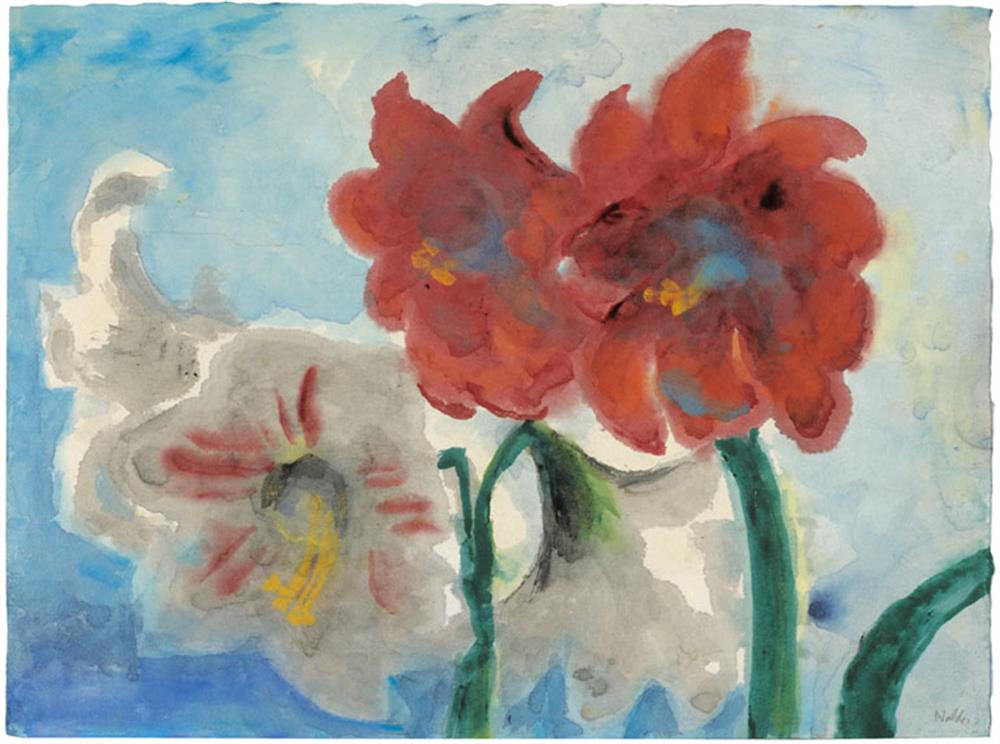
Nolde 1867 - 1956 Seebüll
White and Red Amaryllis
Watercolour on Japan paper
34.8 x 47.1 cm
Signed lower right: Nolde
Certificate of authenticity with photograph by Prof. Dr. Manfred Reuther, Nolde Stiftung Seebüll, 18 September 2003.
This watercolour has been registered with the Nolde Stiftung Seebüll, number "A.Fremd.2529".
Provenienz:
Private collection, South Germany
Literatur:
cf. Exhibition catalogue "Emil Nolde. In Glut und Farbe", ed. by Agnes Husslein-Arco and Stephan Koja, Unteres Belvedere, Vienna 2013/2014, ill. p. 210 ff
"It was on Alsen in the middle of summer. The colours of the flowers attracted me irresistibly and almost suddenly I was painting. My first small garden paintings were created. The blooming colours of the flowers and the purity of these colours, I loved them. I loved the flowers in their fate: sprouting up, blooming, glowing brightly, bending, withering, ending discarded in the pit." (Emil Nolde, Jahre der Kämpfe, Flensburg 1958, p. 95).
When the artist writes of the spontaneous, fulfilling experience of the colours in blossom, but immediately invokes the topoi of becoming and passing away, making them with melancholy seriousness the symbol of human fate, this shows the metaphysical and also spiritual qualities that he sees inscribed in nature and flowers. Almost allegorically, our depiction of white and red amaryllis blossoms from the 1950s can be understood as a finale in the ecstasy of colours, by the artist Emil Nolde, who soon spent 40 years intensively exploring the form of the watercolour flower.
As "deeper, more broadly conceived and more melancholy saturated" (quoted from Martin Urban, Emil Nolde - Blumen und Tiere. Watercolours and Drawings, Cologne 1980, p. 734), Emil Nolde already characterised his flower and garden paintings after moving to Seebüll - a tendency that can also be seen in our watercolour. In the fine balance of luminous blossoms and sky-blue pictorial background, the opulent amaryllis reveal the unrestrained power of Nolde's late work.
